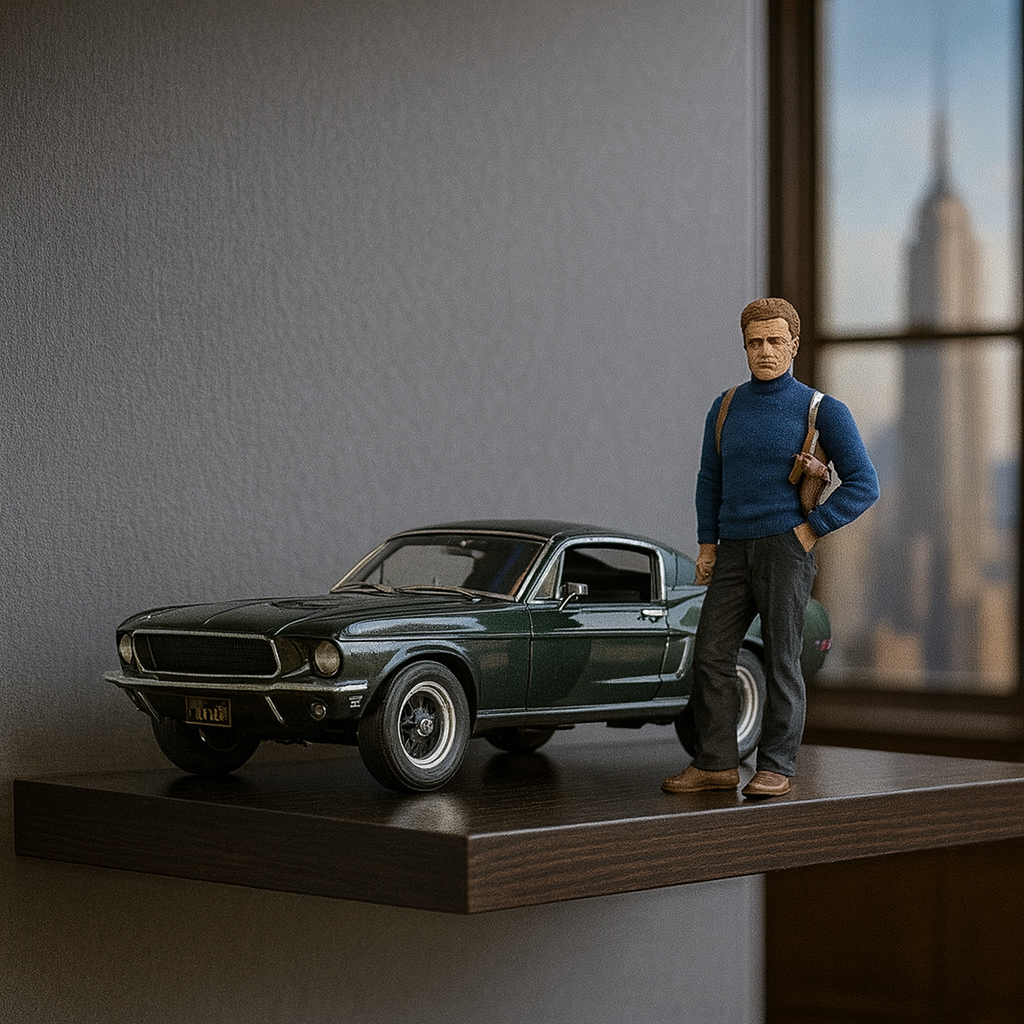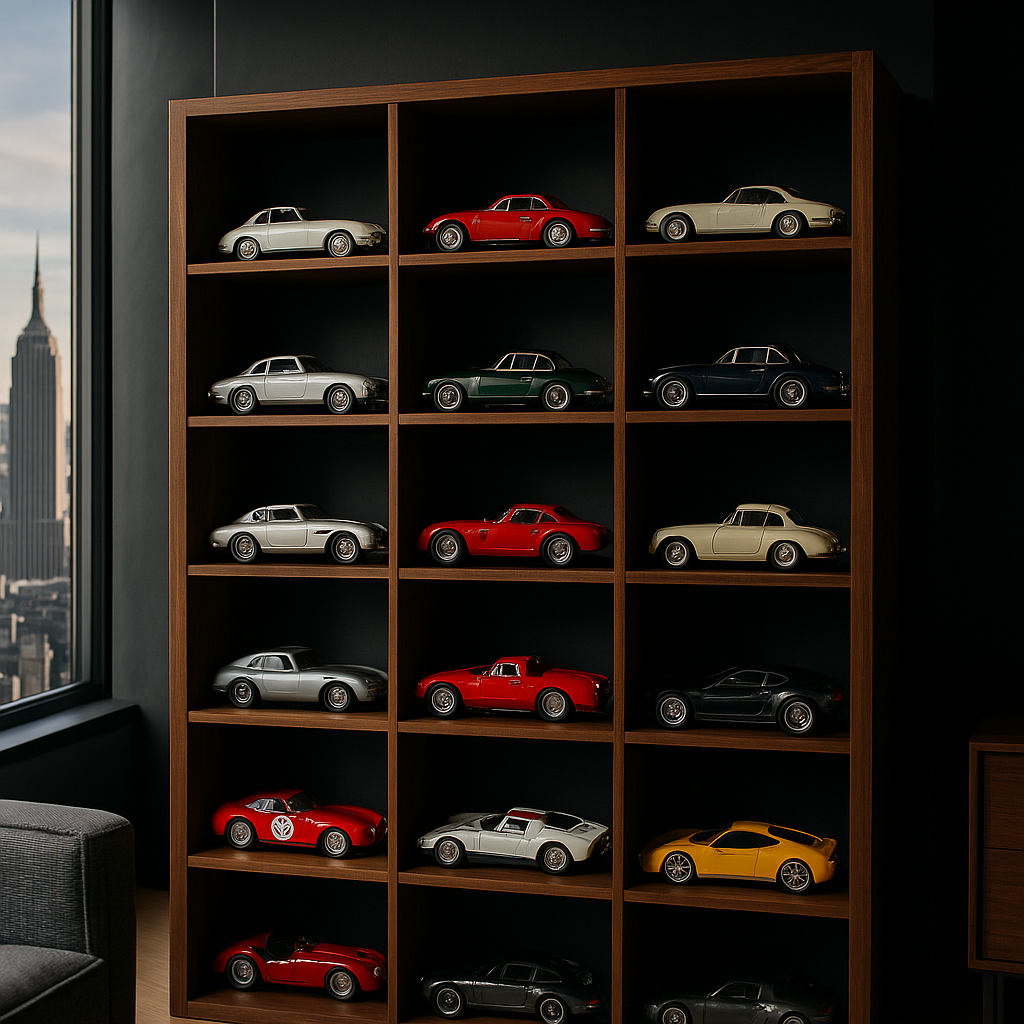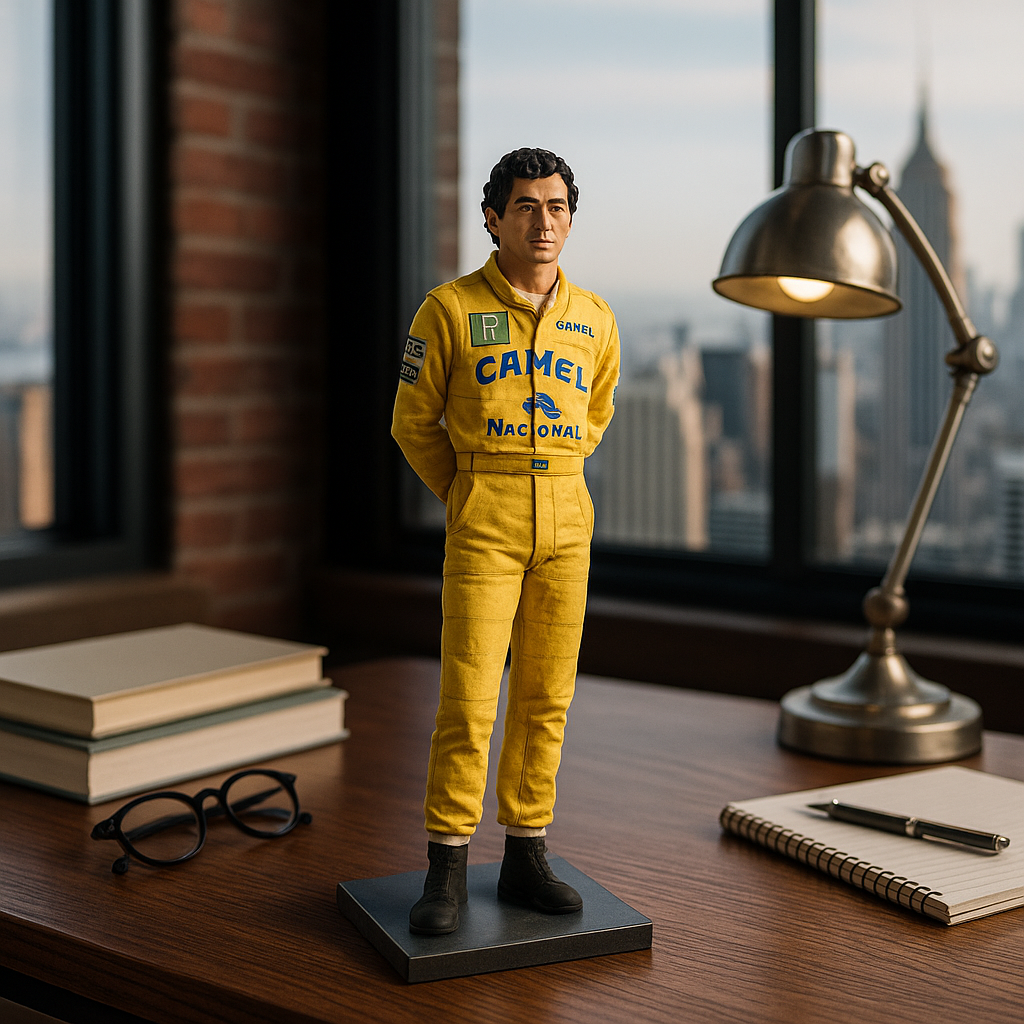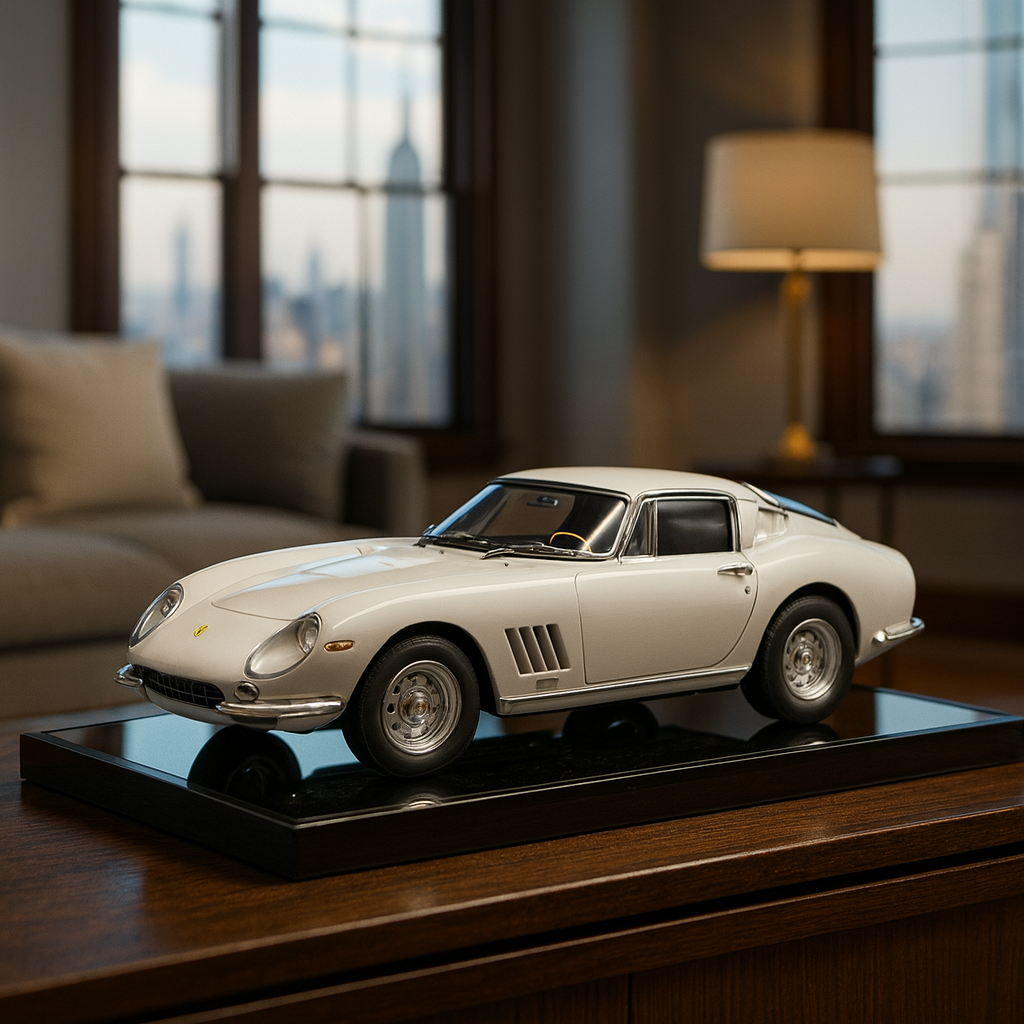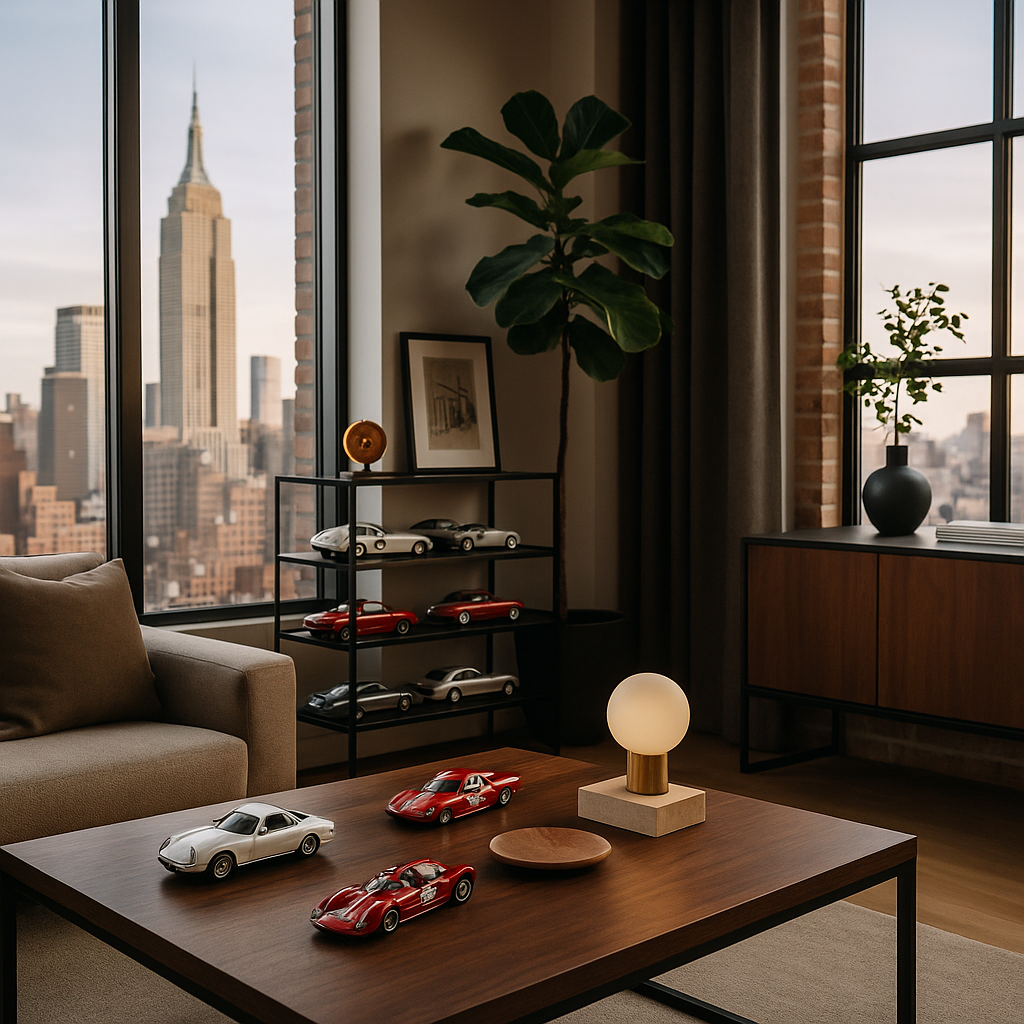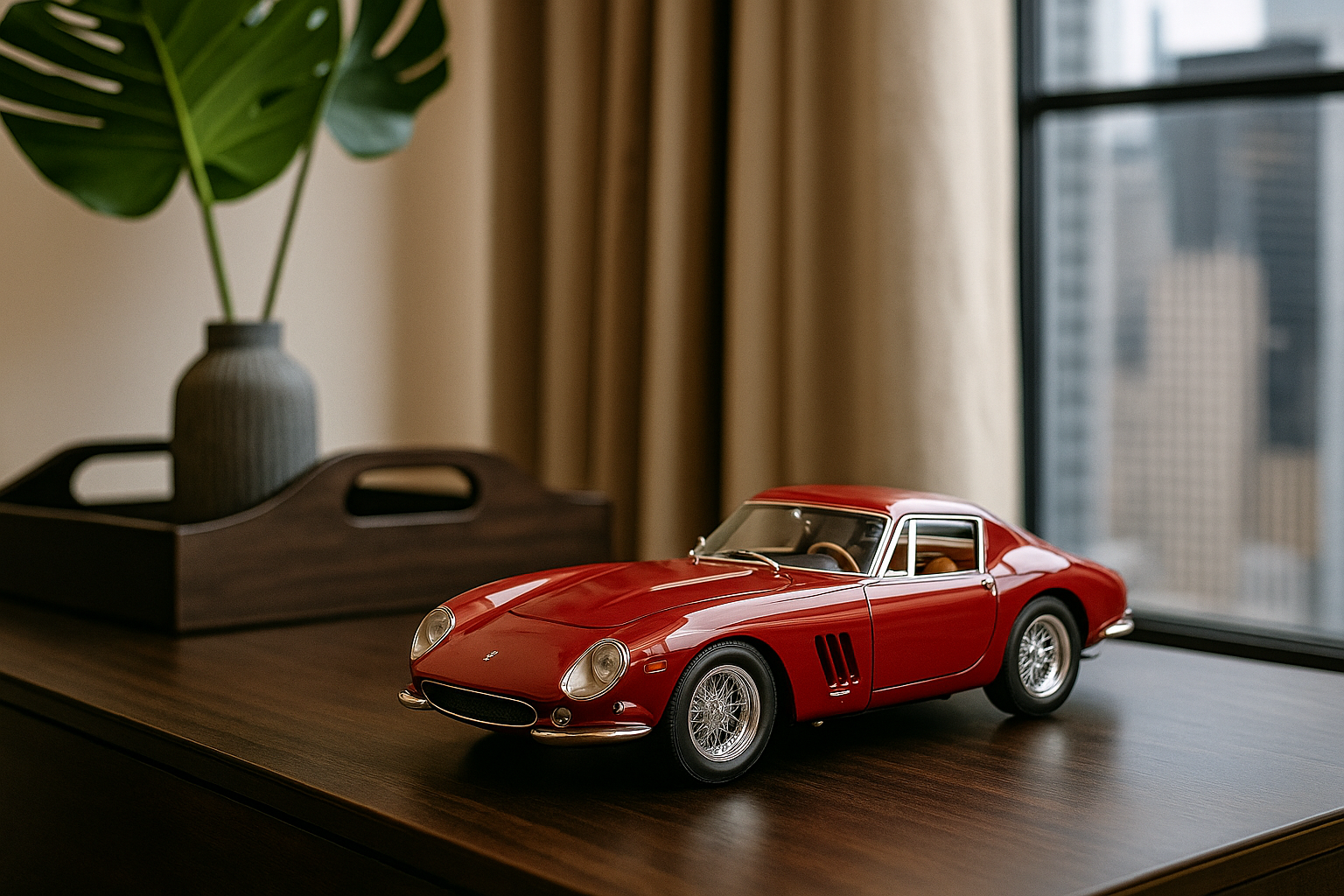
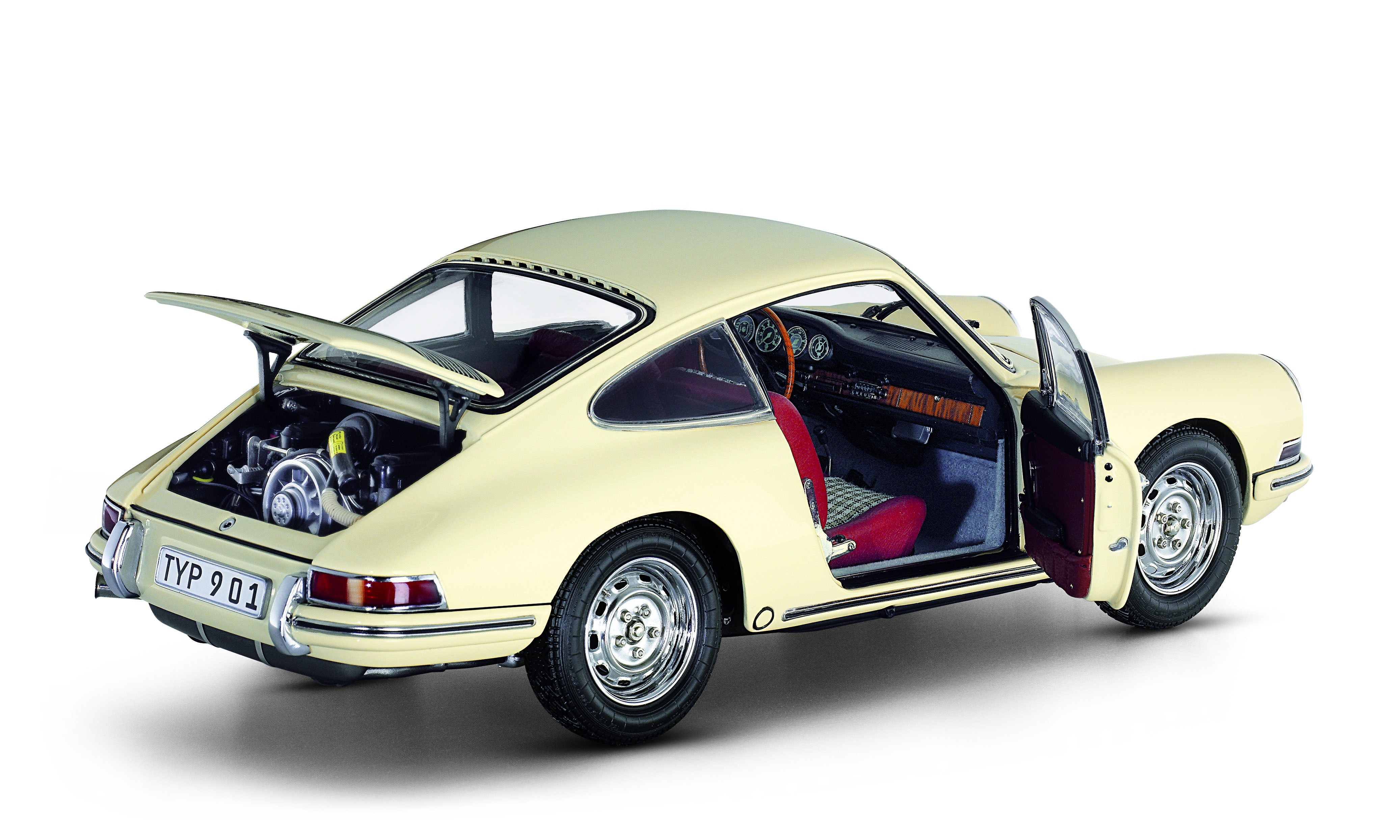
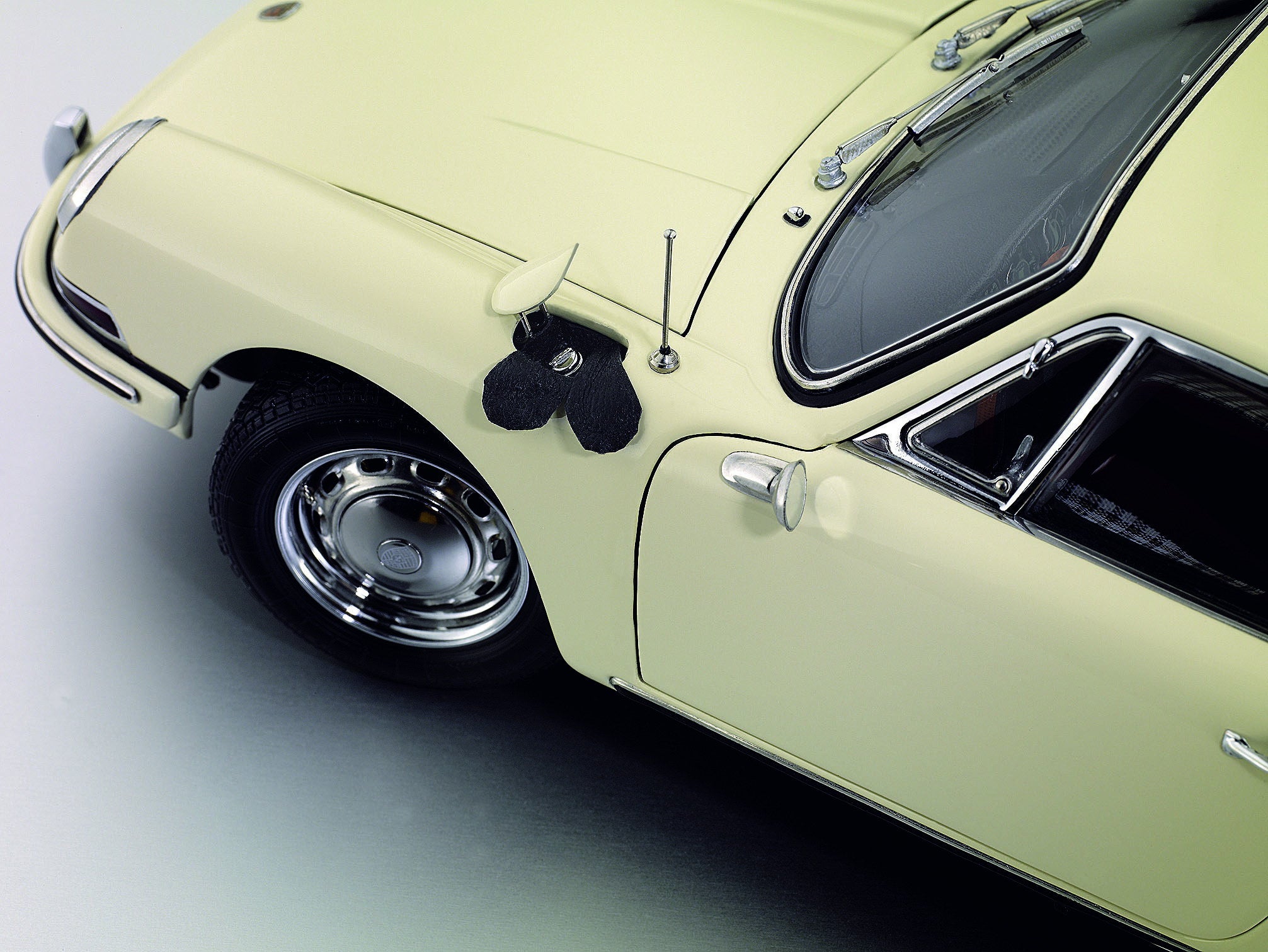
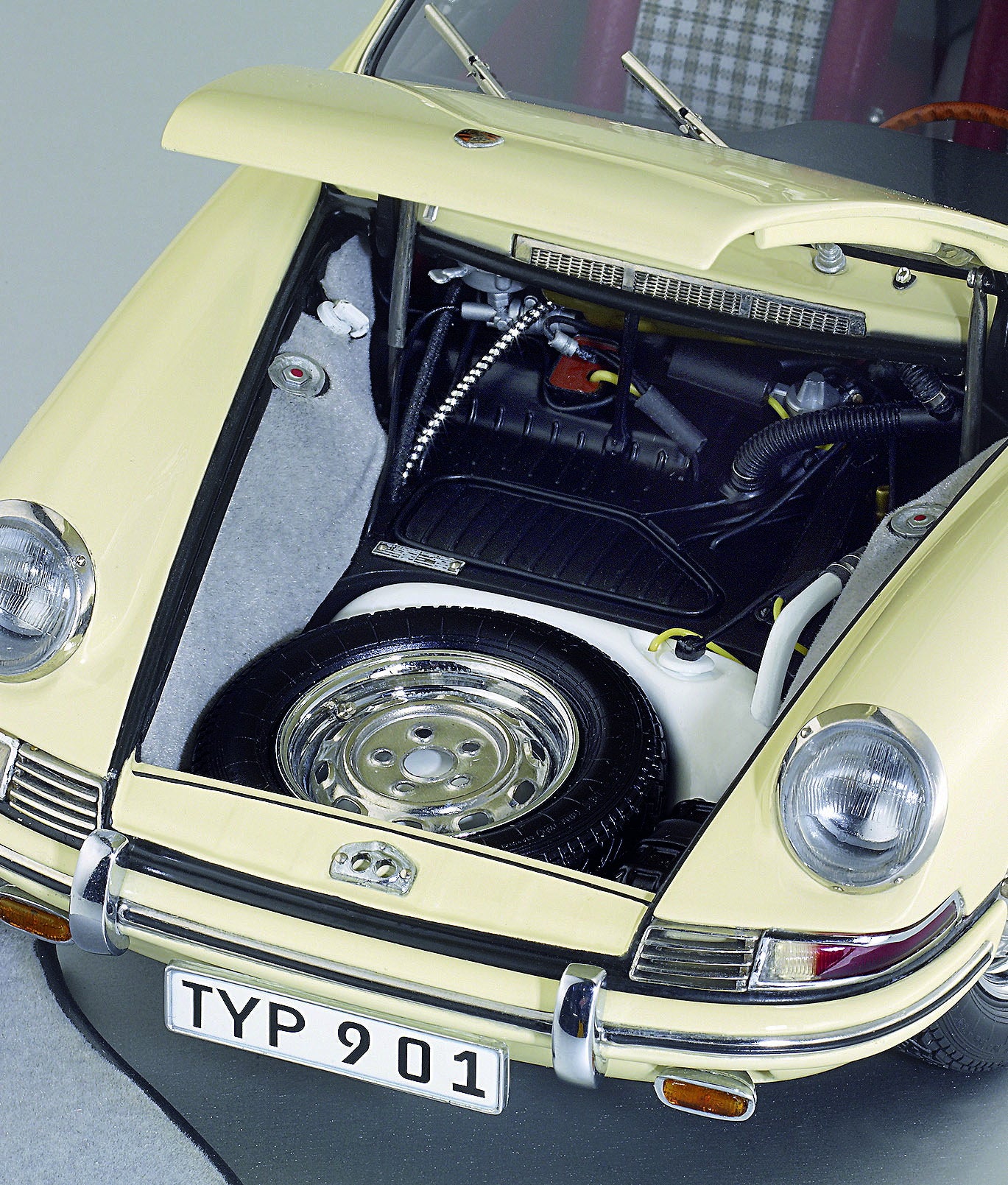
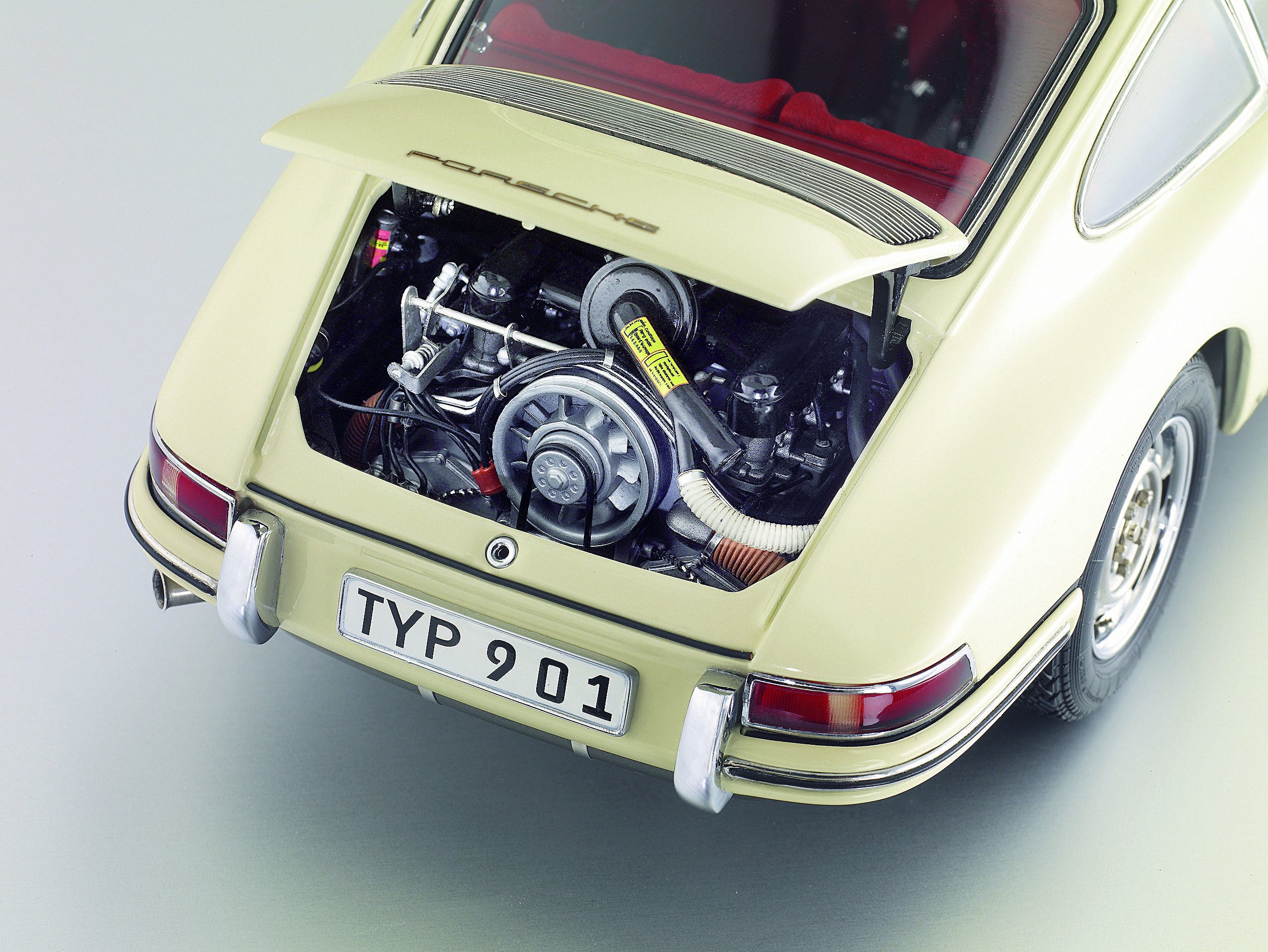
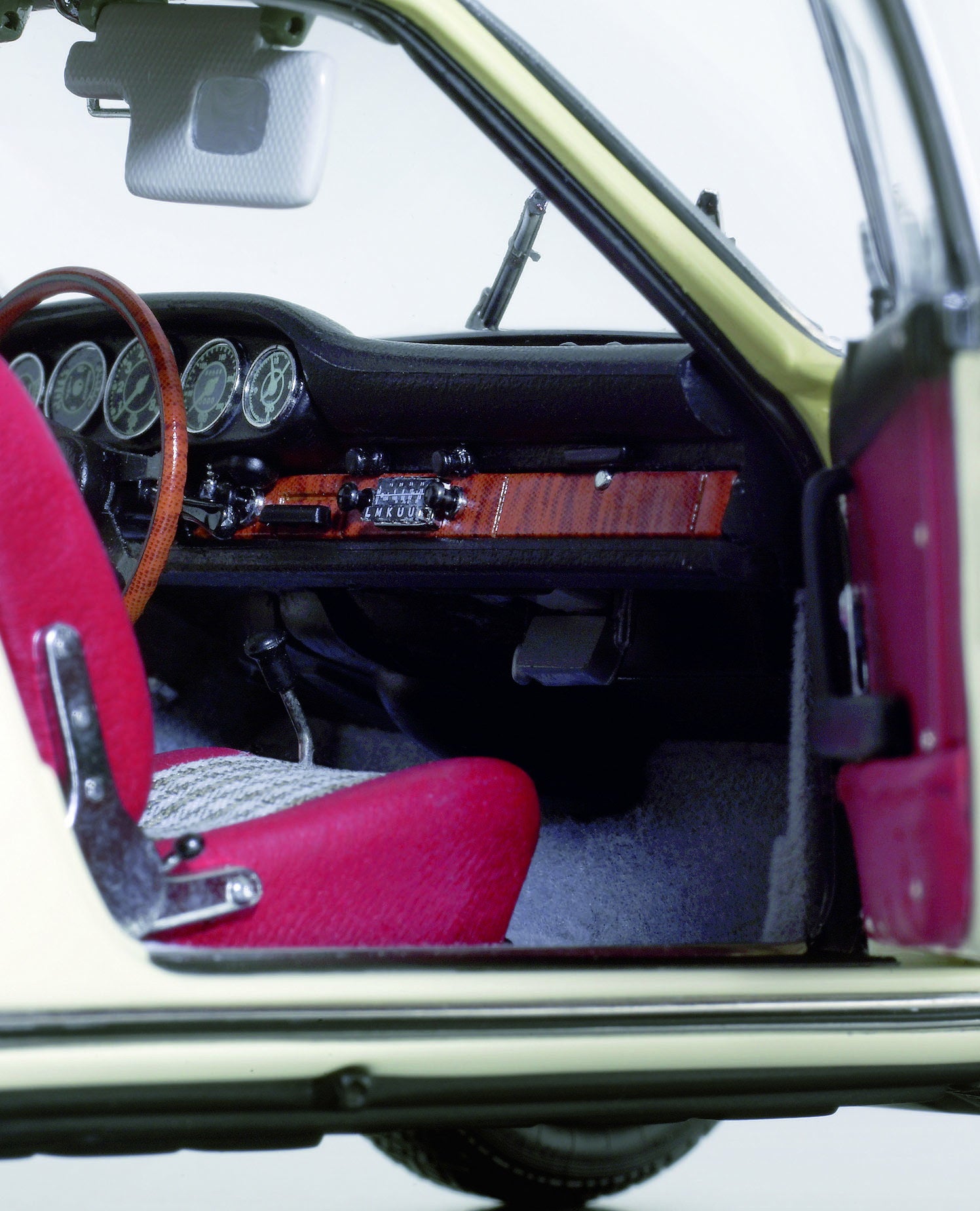

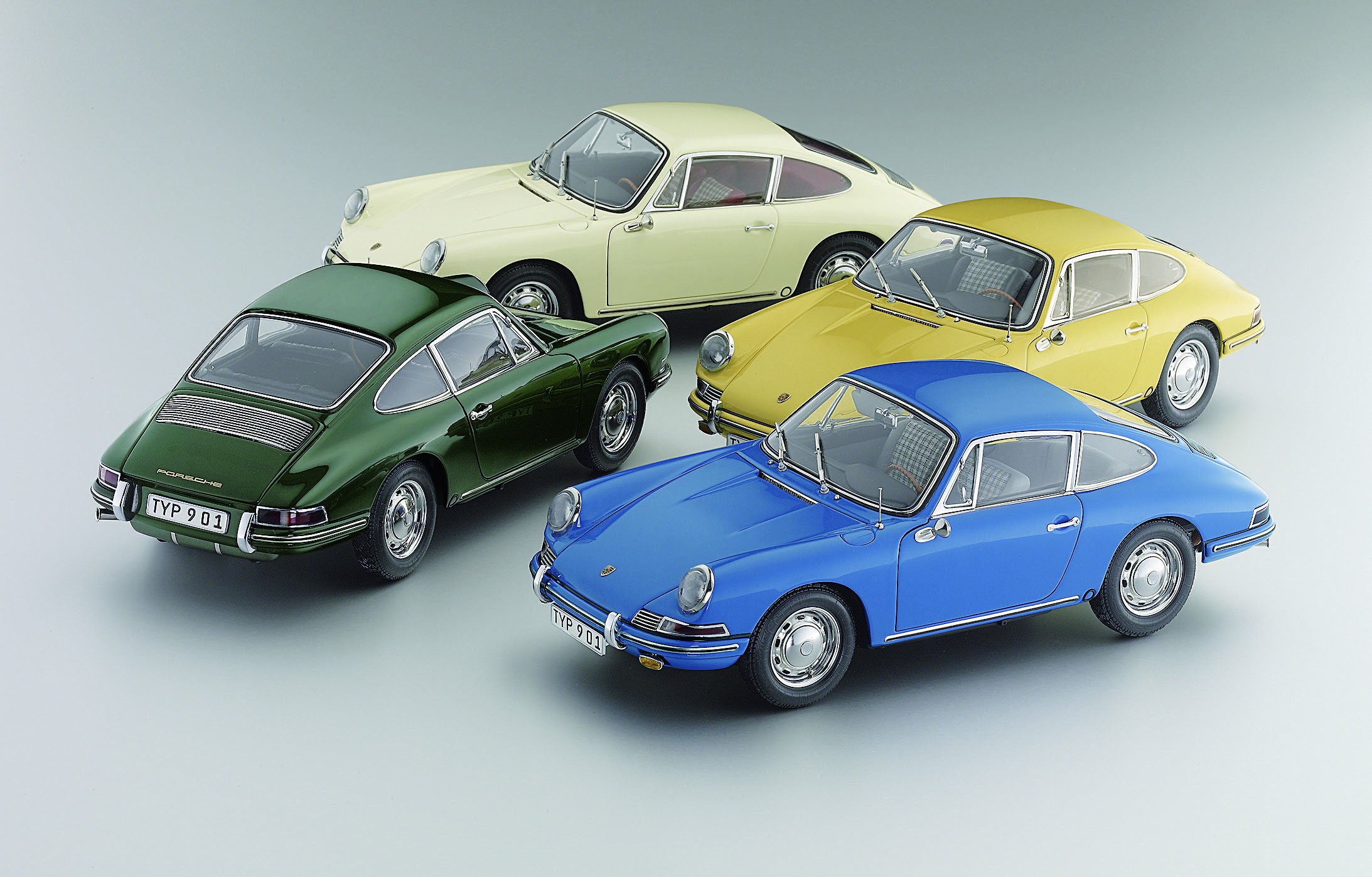
Porsche 901 Coupe champagne yellow CMC M-067A

Description
On September 12, 1963, Porsche unveiled the Type 901 at the Frankfurt Motor Show as the successor to the Porsche 356. One year later, the model—now ready for production—was presented to the public at the Paris Motor Show. Peugeot intervened and banned the Porsche designation "901" because of the trademarked zero in the middle of its own model designations.
Until Porsche reacted, exactly 82 production vehicles bearing the type designation "901" left the factory starting on September 14, 1964, the day production began. After that, the "901" became the "911" – the three-digit number sequence that became a myth and continues to set every sports car enthusiast's heart racing.
Porsche had already been thinking about the body shape in the 1950s. The final design was developed by Porsche's son, Ferdinand Alexander. With his clear and simply beautiful concept, he achieved a line that perfectly reflected the spirit of the 1960s – and continues to resonate today. Ferry Porsche was absolutely right when he later said: "This model shaped the unmistakable character of the Porsche sports car." Even little boys dreamed of owning a "911." Those who unfortunately couldn't afford one at least received a miniature from friends for their birthdays, which from then on occupied a place of honor on the shelf.
The 901, or rather, the 911, has now firmly established itself in the Olympus. For all those who still dream of it—and, of course, all model fans—CMC now offers the 901 as a stunningly beautiful miniature, handcrafted from 971 parts—and thus, finally, a model that does justice to the original.
Technical data of the original vehicle
Six-cylinder boxer engine with air cooling, two-door, 2+2-seater, self-supporting coupé body made of sheet steel
| Perfomance: | 130 hp at 6,100 rpm |
| Engine capacity: | 1,991 cc |
| Top speed: | approx. 210 km/h |
| Total length: | 4,163 mm |
| Wheelbase: | 2,211 mm |
Notice
On September 12, 1963, Porsche unveiled the Type 901 at the Frankfurt Motor Show as the successor to the Porsche 356. One year later, the model—now ready for production—was presented to the public at the Paris Motor Show. Peugeot intervened and banned the Porsche designation "901" because of the trademarked zero in the middle of its own model designations.
Until Porsche reacted, exactly 82 production vehicles bearing the type designation "901" left the factory starting on September 14, 1964, the day production began. After that, the "901" became the "911" – the three-digit number sequence that became a myth and continues to set every sports car enthusiast's heart racing.
Porsche had already been thinking about the body shape in the 1950s. The final design was developed by Porsche's son, Ferdinand Alexander. With his clear and simply beautiful concept, he achieved a line that perfectly reflected the spirit of the 1960s – and continues to resonate today. Ferry Porsche was absolutely right when he later said: "This model shaped the unmistakable character of the Porsche sports car." Even little boys dreamed of owning a "911." Those who unfortunately couldn't afford one at least received a miniature from friends for their birthdays, which from then on occupied a place of honor on the shelf.
The 901, or rather, the 911, has now firmly established itself in the Olympus. For all those who still dream of it—and, of course, all model fans—CMC now offers the 901 as a stunningly beautiful miniature, handcrafted from 971 parts—and thus, finally, a model that does justice to the original.
Technical data of the original vehicle
Six-cylinder boxer engine with air cooling, two-door, 2+2-seater, self-supporting coupé body made of sheet steel
| Perfomance: | 130 hp at 6,100 rpm |
| Engine capacity: | 1,991 cc |
| Top speed: | approx. 210 km/h |
| Total length: | 4,163 mm |
| Wheelbase: | 2,211 mm |


